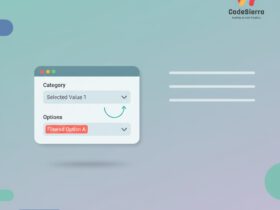Quick summary
Understanding the difference between static and dynamic dashboards in Salesforce is essential for admins and architects who design reporting for multiple users or teams. This post explains both dashboard types, the core differences, use cases, limitations, and best practices to help you choose the right approach for your org.
Definitions
Static dashboards (often called “run-as a specified user”) display data according to a single user’s security context — the dashboard always shows data the specified user can see. Dynamic dashboards (“view dashboard as the logged-in user”) change results based on who is viewing the dashboard, showing each viewer only the data they are permitted to see.
Key differences
Run-As / View-As behavior
Static dashboards: The dashboard runs as one specified user (for example, a system administrator). All viewers see the same data regardless of their individual record-level sharing.
Dynamic dashboards: The dashboard runs as the logged-in user, so each user sees data filtered by their own permissions and sharing rules.
Security & data visibility
Static: Useful when you want a single shared view (like executive-level dashboards) where report results are consistent across viewers. You must set the dashboard to run as a user who has visibility to all relevant data.
Dynamic: Enforces each user’s sharing model automatically—no need to create multiple dashboard copies for different teams.
Licensing & limits
Static dashboards: There is no special limit on static dashboards beyond normal dashboard counts and user permissions.
Dynamic dashboards: Salesforce imposes a limit on the number of dynamic dashboards an org can have (this limit depends on your edition and license). Also, only users with the “View My Team’s Dashboards” or appropriate permissions can create/run dynamic dashboards.
Use cases
Static dashboards are best for:
– Executive rollups or KPIs where a consistent, organization-wide view is required.
– When a dashboard should always reflect the perspective of a single user or role.
Dynamic dashboards are best for:
– Managers who want to view their own team’s performance without multiple dashboard copies.
– Shared dashboards across a sales organization where each rep should only see their own records.
Advantages & limitations
Advantages of static dashboards:
– Predictable and consistent results across viewers.
– No special dynamic-dashboard limits to manage.
Limitations of static dashboards:
– Not suitable when viewers must see personalized, filtered data. Requires multiple dashboard copies for different audiences.
Advantages of dynamic dashboards:
– Personalization: each user sees data scoped to their security context without duplicating dashboards.
Limitations of dynamic dashboards:
– Org-level limits on the number of dynamic dashboards.
– Some sharing scenarios (complex sharing recalculations) may cause unexpected results—test with representative users.
How to set the “View Dashboard As” option
When editing a dashboard you can choose how it runs. The primary options are:
View Dashboard As: "The dashboard viewer" (dynamic) OR "A specified user" (static)
Steps: Edit Dashboard → Click the gear (Dashboard Properties) → Set “View Dashboard As” → Save.
Best practices
– Use dynamic dashboards for manager/rep-level views to reduce maintenance and ensure correct data visibility.
– Reserve static dashboards for standardized executive reporting where consistency is critical.
– Monitor your org’s dynamic dashboard limits and plan accordingly (archive or convert dashboards as needed).
– Test dashboards with users across roles to confirm visibility matches requirements.
Conclusion
Static dashboards provide a single, consistent viewpoint by running as a specified user. Dynamic dashboards provide personalized views by running as the logged-in user but are subject to org limits. Choose based on whether you need uniform results for all viewers (static) or individualized results respecting user security (dynamic).










Leave a Reply